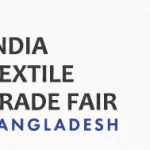 Apparel companies around the world are conducting their business under very distinctly and drastically varied circumstances. For example, clothing items are being produced for the world market in various countries where the minimum wage varies from a meager $1.50 per day to $15.00 per day. In some countries the factories are clustered next to the seaport in an industrial or free trade zone and in many other countries, factories are spread around an inland capital and they have to send their filled containers by truck on a four to eight-hour ride to the nearest port. There are countries that enjoy free or preferential trade relations into their lead markets and other countries that do not. Also, there are stark differences in the working conditions in terms of various facilities that need to be provided under the global Corporate Social Responsibility (CSR) compliance being now demanded by top global buyers.
Apparel companies around the world are conducting their business under very distinctly and drastically varied circumstances. For example, clothing items are being produced for the world market in various countries where the minimum wage varies from a meager $1.50 per day to $15.00 per day. In some countries the factories are clustered next to the seaport in an industrial or free trade zone and in many other countries, factories are spread around an inland capital and they have to send their filled containers by truck on a four to eight-hour ride to the nearest port. There are countries that enjoy free or preferential trade relations into their lead markets and other countries that do not. Also, there are stark differences in the working conditions in terms of various facilities that need to be provided under the global Corporate Social Responsibility (CSR) compliance being now demanded by top global buyers.
The global textile market is expected to grow from $594.61 billion in 2020 to $654.57 billion in 2021 at a compound annual growth rate (CAGR) of 10.1%. The market is expected to reach $821.87 billion in 2025 at a CAGR of 6%. For textiles, Asia accounts for nearly 45% of world textiles exports. The EU and the U.S. are the biggest importers of textiles. According to CNTAC, China’s outbound foreign investments in the textile and apparel sector exceeded $6.7 billion from 2015 to 2020. Nearly $1.8 billion (or 26.6%) went to neighboring Southeast Asian countries, including Vietnam, Cambodia, Thailand, Lao, and Myanmar. China plans to rely more heavily on its domestic market. It’s annual clothing retail sales could exceed $415 billion by 2025 (vs. $347 billion in the U.S.). China is no longer the cheapest source of labor. Garment worker wages in Mexico are over 25% lower than garment worker wages in China.
The apparel industry is considered to be an engine of growth and industrialization for developing countries around the world. The apparel sector provides jobs opportunities and often higher incomes to its workforce, compared to their other livelihood opportunities. However, it has been observed that the emergence of an apparel industry is typically accompanied by rural-to-urban migration in order to meet the increased demand for labor. This underscores the attractiveness of such employment. Also, the easy advances made by early industrializers, such as South Korea, cannot be as easily replicated today. This is mainly because earlier, the industry‘s internal logic was driven by the need to diversify sources of manufacturing in order to get around constraints imposed by textile trade quotas (i.e., before 1995), but today the internal logic is driven by retailers‘ desires to pass on as many risky dimensions of the business as possible to vertically integrated, globally networked, technologically savvy, and socially responsible producers. Due to the increasing competitive environment, the industry is considered a “buyer driven” industry where value is captured downstream, either by large retailers or brand names. The pattern of world apparel exports reflects fashion companies’ shifting strategies to reduce sourcing from China. China, the European Union (EU28), Bangladesh, and Vietnam unshakably remained the world’s top four exporters of apparel in 2019.
The fast-changing trends in apparel and retail business dynamics favor small countries that base their competitive advantage on a high quality, proximity and flexibility niche; because China still remains an ocean freight market, manufacturers providing full package services at a fast pace are expected to be big winners in the industry. No single formula for success can be there in view of diverse varieties of garments, human resource and skill sets, sourcing patterns, and value-chain strengths and weaknesses.
Hopefully, the 7 PM MITRA Parks and other recent government initiatives will help in resetting India’s textile sector, the drastic overhauling of which is long overdue.
G.D. JASUJA
Managing Editor





